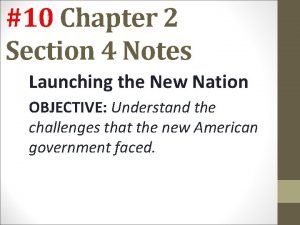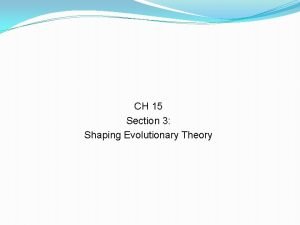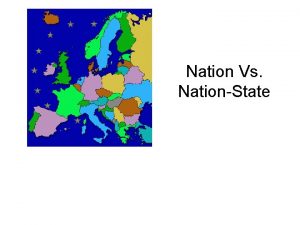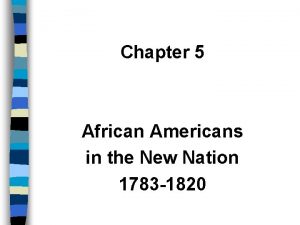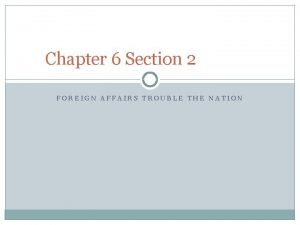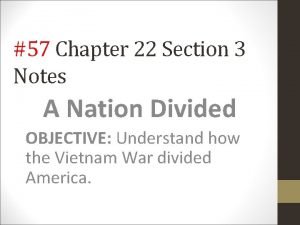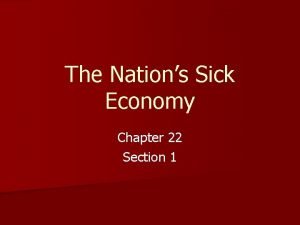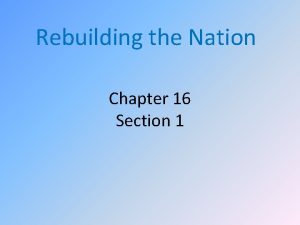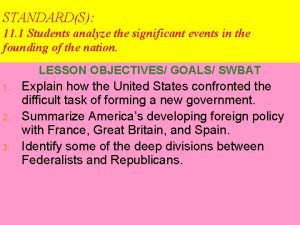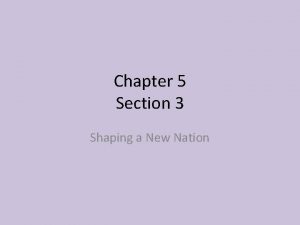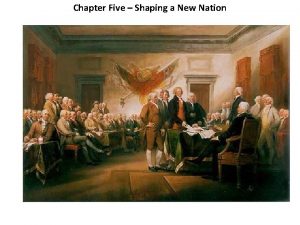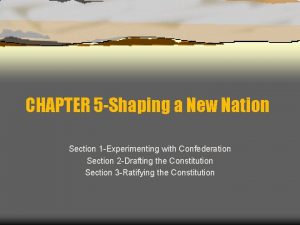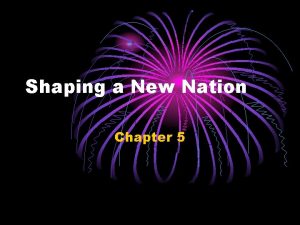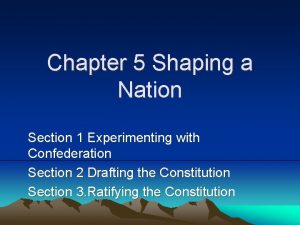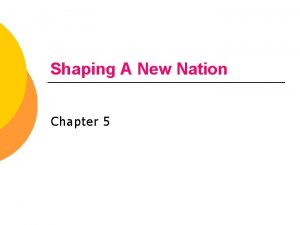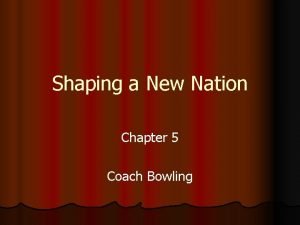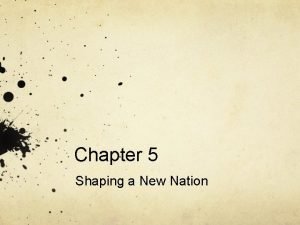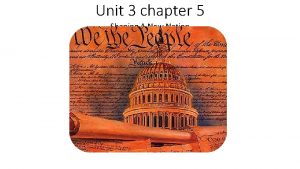Chapter 5 Shaping A New Nation Section 2













- Slides: 13

Chapter 5: Shaping A New Nation Section 2: Drafting the Constitution

A. Nationalists Strengthen The Government • 1787 - Daniel Shays led Shays Rebellion in Massachusetts. • Shays & poor farmers unable to pay taxes=land being confiscated • Rebelled against gov’t & attempted to stop court proceedings and land confiscations. • National government unable to respond. • Causing many to worry the government could not protect itself from its own citizens.

A. Nationalists Strengthen the Government • Plans were made for a meeting to revise the Articles of Confederation • May 1787 - delegates from twelves states met in Philadelphia to revise the Articles. • One delegate, James Madison from Virginia came to the convention with a new plan for a new government known as the Virginia Plan • Recommended throwing out the Articles and writing a new constitution • Three branch government • Bicameral (two house) Congress with states represented by population.

B. Conflict Leads to Compromise • The Virginia Plan was adopted by the delegates at the Constitutional Convention, but there were many disagreements and problems to be worked out. • There was a huge debate over representation in Congress • The large states wanted representation to be based on population and felt that states with more people should get more votes. • Smaller states wanted representation to be determined by equality so they would not be constantly overpowered by the large states. • This argument nearly caused the convention to fall apart before a compromise was reached.

B. Conflict Leads To Compromise • The Great Compromise- agreed the lower house of Congress (House of Representatives) would be based on population. • The House of Representatives would also be elected by the people. • The upper house of Congress (Senate) would be based on equality. • The Senate would be chosen by state legislatures.

B. Conflict Leads to Compromise • This solved the dispute over representation, but a new problem over slavery developed. • Southern states wanted to count slaves as part of their populations. • Northern states knew this would mean the South would overpower other regions. Agreed to the Three-Fifths Compromise- slaves would count as three-fifths of a non-slave when determining representation.

C. Creating a New Government • The Constitution creates a federal system, or a government based on federalism. • Federalism- division of power between national and state government • Also based on separation of powers, meaning there are three branches of government.

C. Creating a New Government • Executive Branch (President)- enforces or carries out the law. • Legislative Branch (Congress)- makes or writes the law • Judicial Branch (Court System)- interprets or explains the law

C. Creating a New Government • To further prevent concentration and abuse of power, a system of checks and balances was implemented. • This system gives each branch of government checks on the others’ power to make sure that no one branch of government becomes too powerful.

C. Creating a New Government • EXECUTIVE BRANCH: • Can veto laws made by Congress • Can introduce legislation • President appoints justices to the Supreme Court • Can grant pardons.

C. Creating a New Government • LEGISLATIVE BRANCH • Congress can override a Presidential veto • Can impeach the President • Must approve Presidential appointments • Can amend the Constitution • Can impeach judges

C. Creating a New Government • JUDICIAL BRANCH • Supreme Court can strike down an act of the President that is unconstitutional • Supreme Court can strike down an act of Congress that is unconstitutional

C. Creating a New Government • Delegates also argued over the process by which to elect a President because many felt the average citizen could not be trusted to make a wise choice. • As a Compromise, the Electoral College was created • Each state would have a group of electors (determined by the number of their representatives and Senators) that would cast votes for the President.
 Chapter 2 section 4 launching the new nation
Chapter 2 section 4 launching the new nation Chapter 15 section 3 shaping evolutionary theory
Chapter 15 section 3 shaping evolutionary theory Chapter 15 section 3 shaping evolutionary theory
Chapter 15 section 3 shaping evolutionary theory Nation state vs nation
Nation state vs nation Nation state vs nation
Nation state vs nation Theories of origin of state
Theories of origin of state Chapter 5 african american in the new nation
Chapter 5 african american in the new nation Foreign affairs chapter 6
Foreign affairs chapter 6 A nation divided chapter 22 section 3
A nation divided chapter 22 section 3 Chapter 22 section 1 the nation's sick economy
Chapter 22 section 1 the nation's sick economy Chapter 16 section 1 rebuilding the nation answer key
Chapter 16 section 1 rebuilding the nation answer key Chapter 10 section 1 building a german nation
Chapter 10 section 1 building a german nation Week 22 growing pains for the new nation
Week 22 growing pains for the new nation Creating a new nation
Creating a new nation
